- News
- Reviews
- Bikes
- Components
- Bar tape & grips
- Bottom brackets
- Brake & gear cables
- Brake & STI levers
- Brake pads & spares
- Brakes
- Cassettes & freewheels
- Chains
- Chainsets & chainrings
- Derailleurs - front
- Derailleurs - rear
- Forks
- Gear levers & shifters
- Groupsets
- Handlebars & extensions
- Headsets
- Hubs
- Inner tubes
- Pedals
- Quick releases & skewers
- Saddles
- Seatposts
- Stems
- Wheels
- Tyres
- Tubeless valves
- Accessories
- Accessories - misc
- Computer mounts
- Bags
- Bar ends
- Bike bags & cases
- Bottle cages
- Bottles
- Cameras
- Car racks
- Child seats
- Computers
- Glasses
- GPS units
- Helmets
- Lights - front
- Lights - rear
- Lights - sets
- Locks
- Mirrors
- Mudguards
- Racks
- Pumps & CO2 inflators
- Puncture kits
- Reflectives
- Smart watches
- Stands and racks
- Trailers
- Clothing
- Health, fitness and nutrition
- Tools and workshop
- Miscellaneous
- Buyers Guides
- Features
- Forum
- Recommends
- Podcast
review
£1,399.00
VERDICT:
Fundamentally great town bike and weekend cruiser that just needs a couple of practical touches to live up to its hype
Comfy ride
User-friendly belt-drive and hub gears
Over-geared
Handlebar a tad wide
Weight:
11,820g
Contact:
At road.cc every product is thoroughly tested for as long as it takes to get a proper insight into how well it works. Our reviewers are experienced cyclists that we trust to be objective. While we strive to ensure that opinions expressed are backed up by facts, reviews are by their nature an informed opinion, not a definitive verdict. We don't intentionally try to break anything (except locks) but we do try to look for weak points in any design. The overall score is not just an average of the other scores: it reflects both a product's function and value – with value determined by how a product compares with items of similar spec, quality, and price.
What the road.cc scores meanGood scores are more common than bad, because fortunately good products are more common than bad.
- Exceptional
- Excellent
- Very Good
- Good
- Quite good
- Average
- Not so good
- Poor
- Bad
- Appalling
The Cube Editor is a fun, friendly and very practical round-town bike that's capable of much more than just getting you to work or the shops.
If you want a bike that's almost fuss-free, that you can just jump on and go ride to work, to the shops or for a day's pootling round the lanes, the Editor, with its belt drive and hub gears, is a bike you should definitely consider. That it's a friendly and appealing ride too is just the icing on the cake.
> Find your nearest dealer here
What we have here is an aluminium-framed flat-bar town (and country) bike with an aluminium fork, Shimano Alfine 11-speed hub gear, Gates Carbon Drive belt drive, Shimano Deore hydraulic disc brakes and Schwalbe Marathon Supreme tyres.
That précis of the spec list promises a practical bike, but doesn't hint that this is a fun bike too. Note, this is a review of the 2020 Editor; there's now a newer model for 2021, which looks the same but for a change of colour and an extra £200 on the price tag.
The belt drive
The central feature that sets the Editor apart from most round-town bikes is its Gates Carbon Drive CDX belt drive. This comprises a toothed belt with matching broad sprockets instead of your usual chain and narrow pointy chainrings and sprockets. Belt drives have a number of pros and cons, so let's take a quick look at them.
A belt drive's big advantage is that it's clean. It doesn't need any lubrication, so it doesn't get grubby the way a chain does from crud sticking to oil. Rather than the rigmarole of cleaning and relubing that's necessary with a chain drive, you just give a belt drive the occasional scrub when the rest of the bike needs cleaning.
That means a belt drive bike is civilian clothes-friendly. Not only will the belt not leave oil marks on your trousers, but without the teeth of a chain drive there's nothing to snag your cuffs either.
Gates claims a belt lasts more than twice as long as a chain. If you're used to derailleur gear systems that get a couple or three thousand miles out of a chain that may not sound too impressive, but the wrinkle is that chains on single-speed and hub-gear bikes last far longer than on derailleur systems because they run in a straight line without the side-loads that contribute to derailleur chain wear. Expedition cyclists using belt drives say you can get almost 20,000 miles out of a belt.
The two biggest disadvantages are that you need a special frame to accommodate a belt drive, and the only way to get multiple gears is with a hub gear; you can't use a derailleur.
The frame requirement comes about because the belt is one piece so you need to be able to split the rear triangle to pass the belt through it. Bike makers typically put a joint in the right-hand seatstay, as Cube has done. You unbolt it and gently flex the ends apart so the belt can pass through.
You also need a way of tensioning the belt. It has to be tight enough that it can't come unmeshed from the sprockets under load. The Editor achieves this with an eccentric bottom bracket, holding the bottom bracket bearings in an extra shell that can move in the frame to change the distance between the cranks and rear dropouts. Other belt-drive bikes use sliding dropouts.
You can't use a derailleur because the belt needs to be under tension to keep it engaged with the sprocket, so to get a wide gear range you need a hub gear.
Gates still seems to be the only supplier of toothed-belt drives for bikes. Continental had a go in the early 2010s with a belt drive that was used for the Ikea Sladda bike, but problems with the belt led to a recall in 2018 and it hasn't been resurrected.
Ride
The Editor is gloriously friendly and fuss-free. The Gates belt drive is smooth and silent and the Alfine gear shifter needs just a gentle touch to pop you from one gear to another, though it doesn't quite have the light and precise feel of Shimano's top-end road bike shifting.
Tyres often make a big contribution to a bike's ride (see Neil's review of the Spa Cycles Wayfarer for a great example of the difference tyres make). Cube has got tyre choice bang on here with 42mm Schwalbe Marathon Supremes, which combine sensibly low rolling resistance, decent puncture resistance and loads of comfy, cushioning width and grip. I've used Marathon Supremes for commuting, touring and riding dirt roads and trails in dry conditions. They're terrific, versatile tyres that help make the Editor quick, surefooted and reliable.
I like a fairly long-reach riding position, even on a flat-bar bike, so I swapped out the stock 100mm Cube stem for a 120mm unit. That yielded a position that was good for everything from blatting round town to pootling round the lanes. I'm sure normal people would be happy with the stock stem.
Hub gears are often criticised for being less mechanically efficient than derailleur gears. A study by Elizabeth A Casteel and Mark Archibald found the Alfine 11-speed hub to have efficiencies from 90.44% to 96.63% depending on the gear, compared to 97.69% to 99.37% for a Shimano 7-speed derailleur system and 95.79% to 99.49% for a Rohloff Speedhub. However, an earlier study by James Spicer found a much wider range of efficiencies for derailleur gears, from 80.9% to 98.6%, depending on the operating conditions. In other words, a perfectly clean and well-lubricated derailleur setup is better than an Alfine 11 hub, but the derailleur is severely degraded if you let it get clagged up with road crud, which is the way far too many utility bikes end up.
If you've got a pro team mechanic looking after your commuting bike then you're better off with derailleurs, at least as far as pure mechanical efficiency is concerned, but a belt-drive-and-Alfine system needs very little maintenance to keep it working pretty well, so it's still an attractive proposition for some applications.
Certainly, the Editor's drive doesn't feel draggy as you ride along; it feels just like, well, a really nice bike.
The Alfine 11 is the most expensive and sophisticated hub gear Shimano makes and offers a total gear range of 408%. Of widely-available hub gear systems only Rohloff gives you more range, with 14 gears over a 526% range in a hub that costs around £1,000. For comparison, a typical 50/34 chainset with an 11-32 cassette, as you might find on a modern hybrid, has a 426% range.
With a 46-tooth chainring and 22-tooth sprocket, the Editor has a high gear of 122 inches and a low of 30. Frankly, that's a bit silly. Nobody needs a 122-inch gear on a round-town bike, but if you were to venture out of town at the weekend you'd likely be grateful for something lower than that 30-inch bottom gear. One of the disadvantages of a belt drive is that changing gear range is expensive as you'll need new sprockets and a new belt, so it's important for the manufacturer to get it right in the first place.
Other details
I'm a big fan of features like the Editor's belt drive and hub gear, but I wish Cube offered a fully-loaded version too, taking advantage of bike company buying power to include a rack, mudguards, lighting system, frame lock and even a centre stand. Cube could call it the Editor-at-Large.
Lack of, at the very least, rack and mudguards is the biggest downside of the Editor. Sure they're not hard to retrofit, but a bike that's described as 'the ultimate urban assault bike' really really needs them to be fitted as standard. It's not like Cube doesn't have the capability; all its Touring models have racks and guards (and lights and kickstands for that matter).
On an urban bike, the choice of a 660mm-wide handlebar is a touch odd. Okay, it's not the 740mm of a typical mountain bike handlebar these days, but it still puts you in a stance that feels a bit splayed. And of course, if you're gap-storming through traffic it increases your chances of getting hung up on a wing mirror. Still, sorting it out is a few minutes' work with a tube-cutter. Or, if you're me, slap on one of the 580mm flat bars you've inexplicably still got hanging around from the Bronze Age of mountain biking.
Speaking of which, the Shimano Deore hydraulic disc brakes are straight out of the modern era of mountain biking where they have a reputation for providing plenty of stopping power at a very sensible price. There's plenty of braking power here for road use too, from just a single finger on the lever, and more importantly it's easily controlled power. If you're running a flat-bar bike with cable discs you could do a lot worse than replace them with these.
As I said up top, the bike on test here and pictured is the 2020 model. For 2021 it's gone all shiny and looks differently handsome, like this:
Conclusion
There aren't many bikes around with belt drives, let alone in tandem with Shimano's most expensive hub gear, so there's not much to compare the Editor with. It's not as nippy as the appropriately named Merida Speeder that Matt raved about, but it's not intended to be; that's a flat-bar road bike, this is an, ahem, urban assault vehicle. But the Editor is just as characterful as the Speeder and in its own way just as much fun.
The 2021 Editor is a whole £400 cheaper than the Shand Leveret which only has an 8-speed Alfine hub rather than an 11-speeder, and about the same as Trek or Specialized's derailleur-geared carbon-fibre townies, which gain composite cachet at the expense of component level. The extra £300 over a Canyon Commuter 5.0 gets you Alfine 11 instead of Nexus 8, though you lose the Canyon's rack, mudguards and built-in lights.
> Buyer’s Guide: 10 of the best hybrid bikes
Judged on its own substantial merits, though, the Editor is a terrific round-town bike with a smart, balanced specification and impeccable road manners, that begs you to do more than just dash into town on it, and makes doing so very straightforward and fuss-free. It's both day-to-day practical (once you've added a rack and guards) and weekend enjoyable.
Verdict
Fundamentally great town bike and weekend cruiser that just needs a couple of practical touches to live up to its hype
road.cc test report
Make and model: Cube Editor
Size tested: 58cm
About the bike
List the components used to build up the bike.
Frame: Aluminium Superlite Urban Double Butted
Size Men: 46, 50, 54, 58, 62
Fork: Aluminium Rigid Fork
Headset: FSA Orbit Z Semi-Integrated 1 1/8"
Stem: CUBE Performance Stem Pro, 31.8mm
Handlebar: CUBE Flat Race Bar, 660mm
Grips: Natural Fit Comfort
Shifters: Shimano Alfine SL-S700
Brake system: Shimano Deore BR-M6000, Hydr. Disc Brake (160/160)
Crankset: Gates CDX Center Track, 46T, BB Gates
Drive belt: Gates CDX, 113T
Colour: black'n'purple
Sprocket: Gates CDX Center Track, 22T
Front hub: Shimano Deore HB-M6000, QR, Centerlock
Rear hub: Shimano Alfine SG-S7001, 11-Speed
Rims: CUBE UX24, 32H, Disc, Tubeless Ready
Tyres: Schwalbe Marathon Supreme, Kevlar, 42-622
Pedals: VP 615M
Saddle: Selle Royal Prestige
Seat post: CUBE Performance Post, 27.2mm
Seat clamp: CUBE Screwlock, 31.8mm
Bell: Knog Oi
Tell us what the bike is for and who it's aimed at. What do the manufacturers say about it? How does that compare to your own feelings about the bike?
It's a luxury town bike, with a belt drive so you can hop aboard in whatever clothes you happen to be wearing.
I can't quibble with Cube's own assessment, below, except to say that it's slightly silly to call this an urban assult bike: it's far too friendly and sophisticated for that.
Cube says:
"When we set out to design the Editor, we had a very simple goal in mind: make the ultimate urban assault bike. Ultimate looks, ultimate comfort, ultimate speed, ultimate practicality. That's why we started with our advanced aluminium double-butted frame with a sleek rigid fork and hidden rack and mudguard mounts. Lightweight, incredibly efficient and superbly practical, like all our frames it's been through our 24/7 torture-testing lab to verify its strength, durability and safety. We didn't compromise on the transmission, selecting Shimano's superb Alfine 11-speed hub gear and combining it with a Gates belt drive for silent running and practical low-maintenance performance. The eccentric bottom bracket makes belt tension adjustment a cinch and we guarantee you won't miss an oily chain. Powerful Shimano hydraulic disc brakes offer reliable stopping even when the weather isn't cooperating. There are even two bottle cage mounts, so you can stay hydrated if your Editor tempts you into a longer excursion at the weekends. Because after all, one of the beauties of an ultra-efficient urban bike is that it also makes it easier to escape the city."
Where does this model sit in the range? Tell us briefly about the cheaper options and the more expensive options
The Editor sits at the top of Cube's range of urban bikes, above the £999 Hyde Race, which also uses a Gates belt drive, but has the cheaper eight-speed version of Shimano's Alfine hub gear.
If you prefer derailleur gears on your flat-bar luxury townie, take a look at the SL Road series.
Frame and fork
Overall rating for frame and fork
9/10
Tell us about the build quality and finish of the frame and fork?
Everything's tidy and I love the subtle colour scheme. For 2021 that's changed to grey'n'silver.
Tell us about the materials used in the frame and fork?
Cube describes the frame as being made from Superlite Urban Double Butted aluminium, but doesn't say what grade of aluminium's used. The fork has carbon fibre legs and an aluminium steerer.
Tell us about the geometry of the frame and fork?
A 72-degree head angle suggests steady handling, and that's what we find. That's amplified by the long top tube giving a long front centre and on our 58cm sample, a 1,066mm wheelbase.
How was the bike in terms of height and reach? How did it compare to other bikes of the same stated size?
I went for a 58cm sample becaise I like a long reach and I certainly got that, ending up with a bike that's comfortable for long cruisy days out as well as round town.
Riding the bike
Was the bike comfortable to ride? Tell us how you felt about the ride quality.
Yep; plenty comfortable for multi-hour rides, aided by the excellent Schwalbe Marathon Supreme tyres.
Did the bike feel stiff in the right places? Did any part of the bike feel too stiff or too flexible?
All as stiff as it needs to be.
How did the bike transfer power? Did it feel efficient?
Whenever you get aboard a belt-drive bike a nagging voice in the back of your head tells you to expect pedalling to feel kinda rubbery. It doesn't, of course, because a toothed belt with any stretch in it would be a sliptastic disaster. Instead, the whole bike feels tight and well coupled.
Was there any toe-clip overlap with the front wheel? If so was it a problem?
No.
How would you describe the steering? Was it lively neutral or unresponsive? Neutral, which is the way I like town bikes and backlane cruisers. Quirky handling's not a good thing when you're dodging taxi drivers.
Tell us some more about the handling. How did the bike feel overall? Did it do particular things well or badly?
It's friendly. Unsurprising. Neutral. If this were a race bike that'd make it sound boring, but they're just the qualities you want in a townie.
Which components had the most effect (good or bad) on the bike's comfort? would you recommend any changes?
Those fat tyres dominate the feel, in a very good way. They're lovely – fast-rolling and bump-eating all at once.
Which components had the most effect (good or bad) on the bike's efficiency? would you recommend any changes?
The Shimano Alfine hub probably has the most effect on the bike's efficiency, wasting a bit of power in the extreme gears, but it's really not an issue you can feel unless you're far better at detecting peas under the mattress than I am.
Rate the bike for efficiency of power transfer:
8/10
In theory a hub gear is less efficient than a derailleur system, but it's a difference you can't feel.
Rate the bike for acceleration:
7/10
You don't expect a townie to accelerate like a Tour de France bike, but the Editor gets up to speed with decent alacrity.
Rate the bike for high speed stability:
9/10
It's a fun downhill bomber thanks to that long front end and wheelbase.
Rate the bike for cruising speed stability:
9/10
It potters along very nicely.
Rate the bike for low speed stability:
9/10
Manoeuvrable enough to dodge holes in the typical urban moonscape, though the tyres make that necessary far less often.
Rate the bike for flat cornering:
9/10
Rate the bike for cornering on descents:
9/10
Rate the bike for climbing:
7/10
The weight and hub gear probably slow it down a bit, but this just isn't a bike for setting Strava PBs on. That's what your race bike is for.
The drivetrain
Rate the drivetrain for performance:
9/10
Belt drive and hub gear – I'm a big fan, though I'm defining 'performance' here as relating to user-friendliness and convenience rather than all-out ability. to turn muscle power into speed.
Rate the drivetrain for durability:
9/10
Properly tensioned, Gates belt drives have a great reputation for longevity.
Wheels and tyres
Rate the tyres for performance:
9/10
Their combination of decent rolling resistance, a big bag and reasonable puncture resistance makes Marathon Supremes one of my favourite tyres. They're great!
Rate the tyres for durability:
9/10
Rate the tyres for weight:
7/10
Rate the tyres for value:
9/10
Controls
Rate the controls for performance:
8/10
Everything works nicely, but I've deducted a point for the shifter not feeling quite as light and smooth as an equivalent derailleur shifter like SLX or 105.
Rate the controls for comfort:
9/10
Levers and shifter all fall to hand very nicely.
Your summary
Did you enjoy riding the bike? Yes, very much.
Would you consider buying the bike? Yes
Would you recommend the bike to a friend? Yes
How does the price compare to that of similar bikes in the market, including ones recently tested on road.cc?
It's very reasonable compared to other high-end flat-bar bikes. It's a whole £400 cheaper than the Shand Leveret which only has an 8-speed Alfine hub rather than an 11-speeder, and about the same as Trek or Specialized's derailleur-geared carbon-fibre townies, which gain composite cachet at the expense of component level. The extra £300 over a Canyon Commuter 5.0 gets you Alfine 11 instead of Nexus 8, though you lose the Canyon's rack, mudguards and built-in lights.
Rate the bike overall for performance:
8/10
Rate the bike overall for value:
8/10
Use this box to explain your overall score
The thing stopping the Editor getting 4.5 stars overall is the lack of rack and mudguards. Everything else is intelligently specced and the ride is friendly and affable, but you don't get to call a bike an "ultimate urban" anything without those simple practicalities.
About the tester
Age: 53
I usually ride: Scapin Style My best bike is:
I've been riding for: Over 20 years I ride: Most days I would class myself as: Expert
I regularly do the following types of riding: commuting, touring, club rides, general fitness riding, mtb,
John has been writing about bikes and cycling for over 30 years since discovering that people were mug enough to pay him for it rather than expecting him to do an honest day's work.
He was heavily involved in the mountain bike boom of the late 1980s as a racer, team manager and race promoter, and that led to writing for Mountain Biking UK magazine shortly after its inception. He got the gig by phoning up the editor and telling him the magazine was rubbish and he could do better. Rather than telling him to get lost, MBUK editor Tym Manley called John’s bluff and the rest is history.
Since then he has worked on MTB Pro magazine and was editor of Maximum Mountain Bike and Australian Mountain Bike magazines, before switching to the web in 2000 to work for CyclingNews.com. Along with road.cc founder Tony Farrelly, John was on the launch team for BikeRadar.com and subsequently became editor in chief of Future Publishing’s group of cycling magazines and websites, including Cycling Plus, MBUK, What Mountain Bike and Procycling.
John has also written for Cyclist magazine, edited the BikeMagic website and was founding editor of TotalWomensCycling.com before handing over to someone far more representative of the site's main audience.
He joined road.cc in 2013. He lives in Cambridge where the lack of hills is more than made up for by the headwinds.
Latest Comments
- Miller 1 sec ago
I have known more than one elder statesman of the club die of a heart failure while out on a ride. Sometimes I feel that's about to happen to me,...
- Pub bike 17 min 3 sec ago
Via the "wireless active steering system".
- AidanR 25 min 36 sec ago
It does say "so-called reciprocol" to be fair. But I agree, Trump calling the tariffs reciprocol is disingenuous at best, given that they are based...
- Hirsute 40 min 46 sec ago
137m is the farthest I have observed when quickly looking at the Garmin unit....
- pockstone 58 min ago
Yours worked wonders, but if you insist, I'll hop to it...why the need for extra police? Did the fire brigade bottle it?
- Jamminatrix 1 hour 11 min ago
As if Tadej Pogacar's slavery-supporting jersey is any different...
- BikingBud 4 hours 42 min ago
Do you mean this woman, who got out to marshall the truck through and is now walking back to said Wankpanzer which is blocking the road again as it...
- Pub bike 46 min 44 sec ago
He is up against the global trading system, which has obviously been in the news a lot lately. Framebuilders in other countries can undercut him,...





















































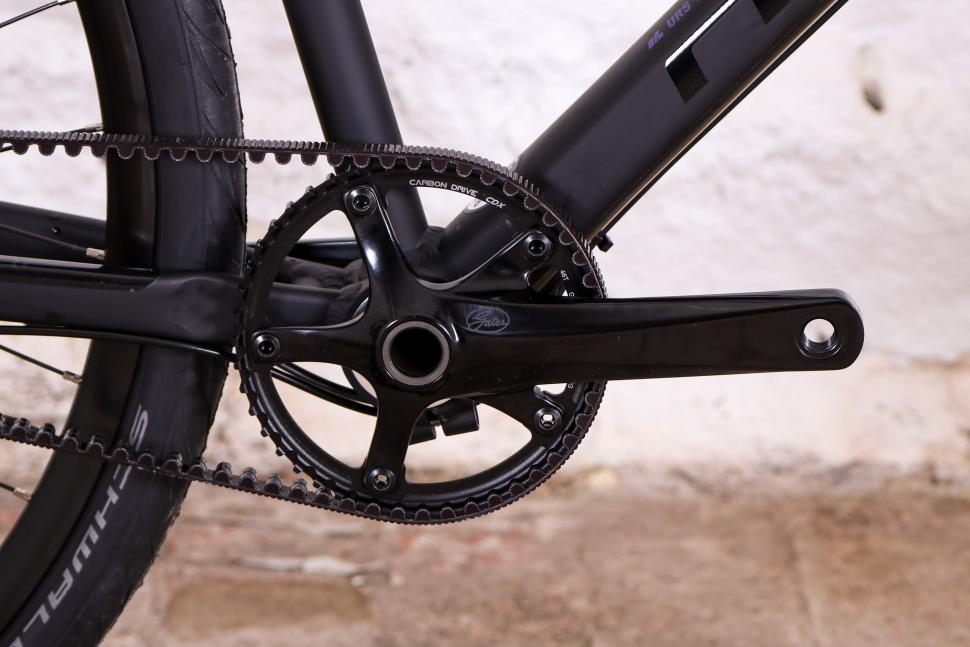
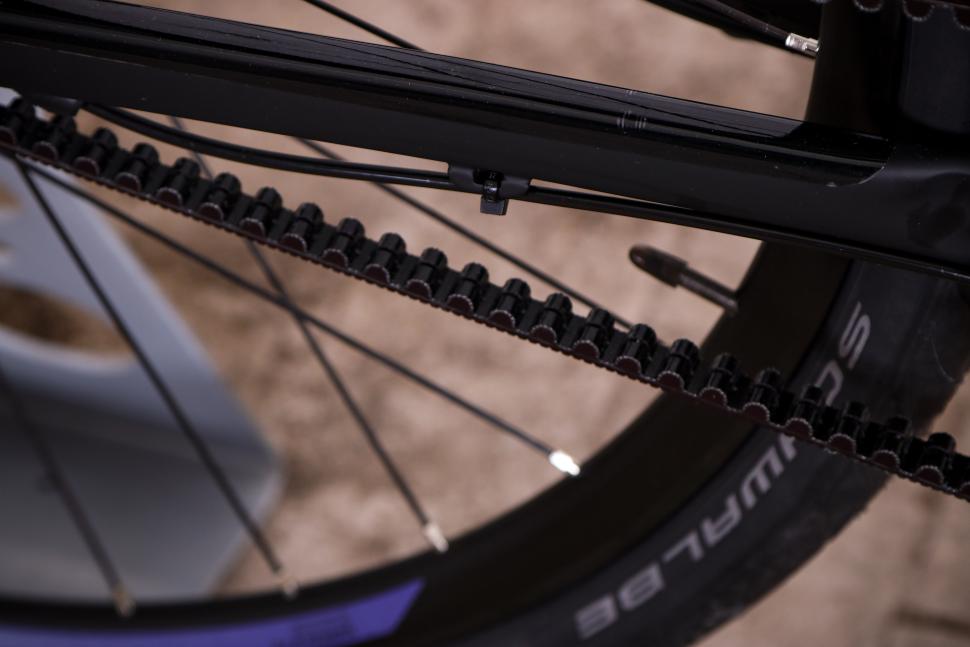

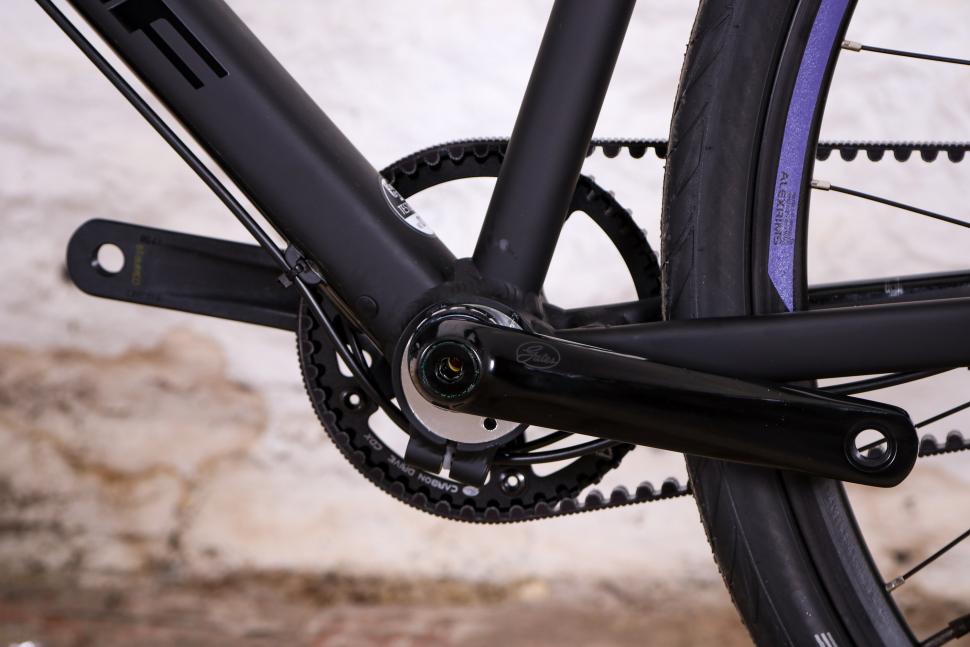
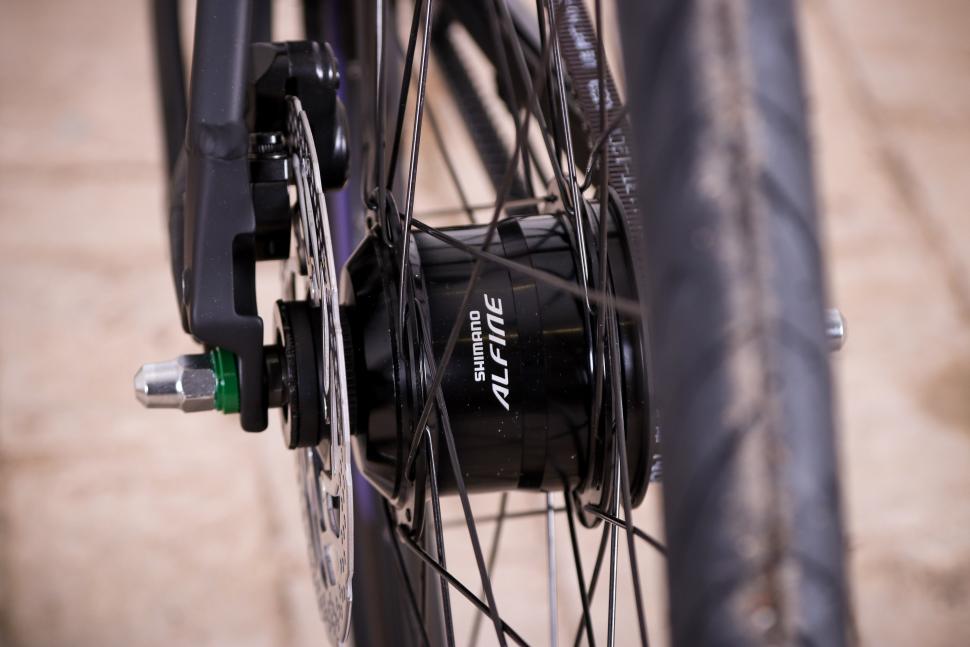

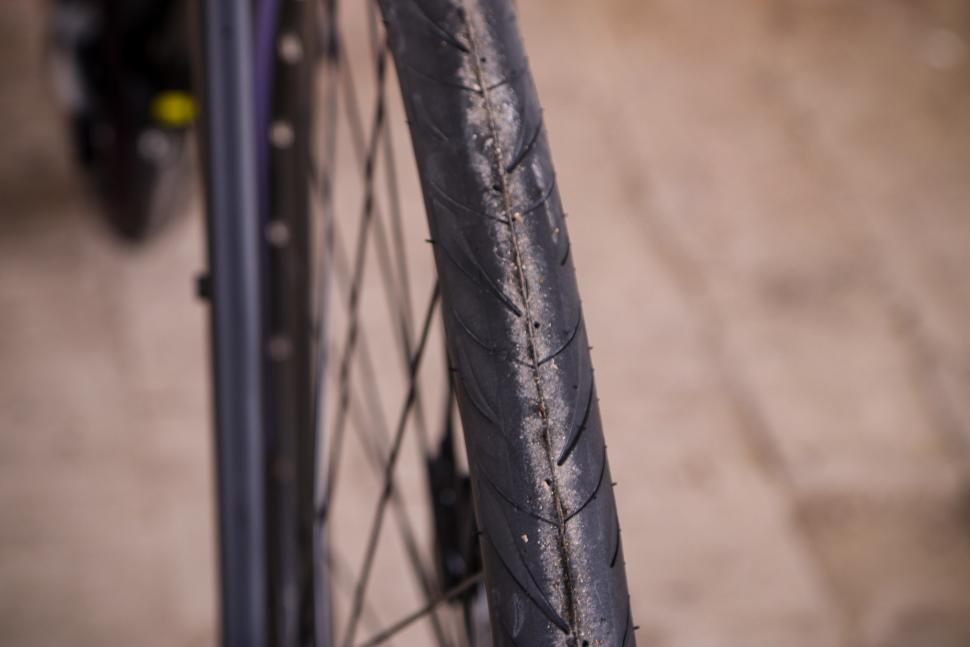
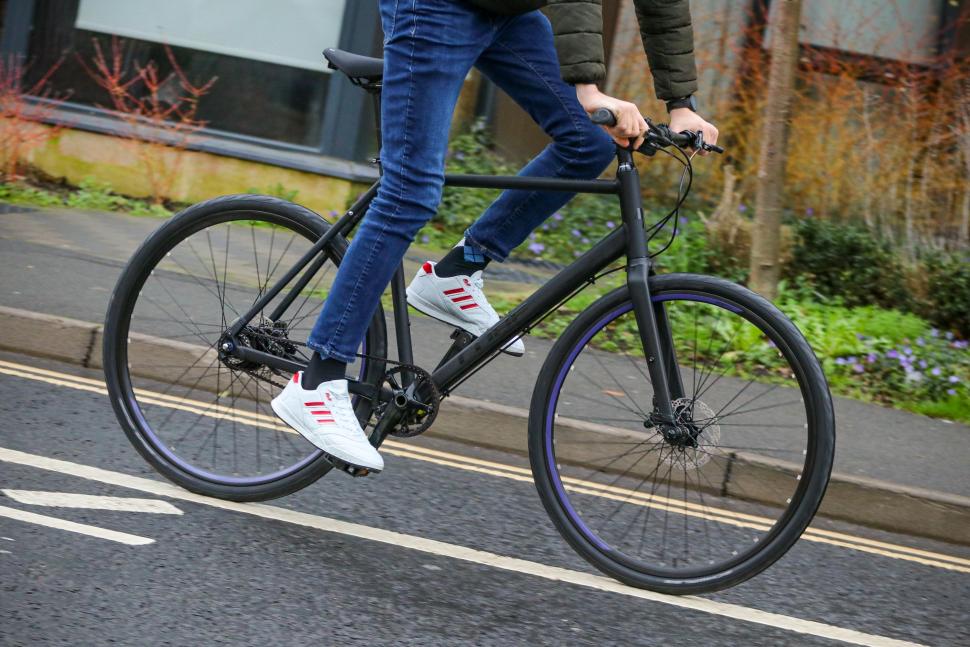
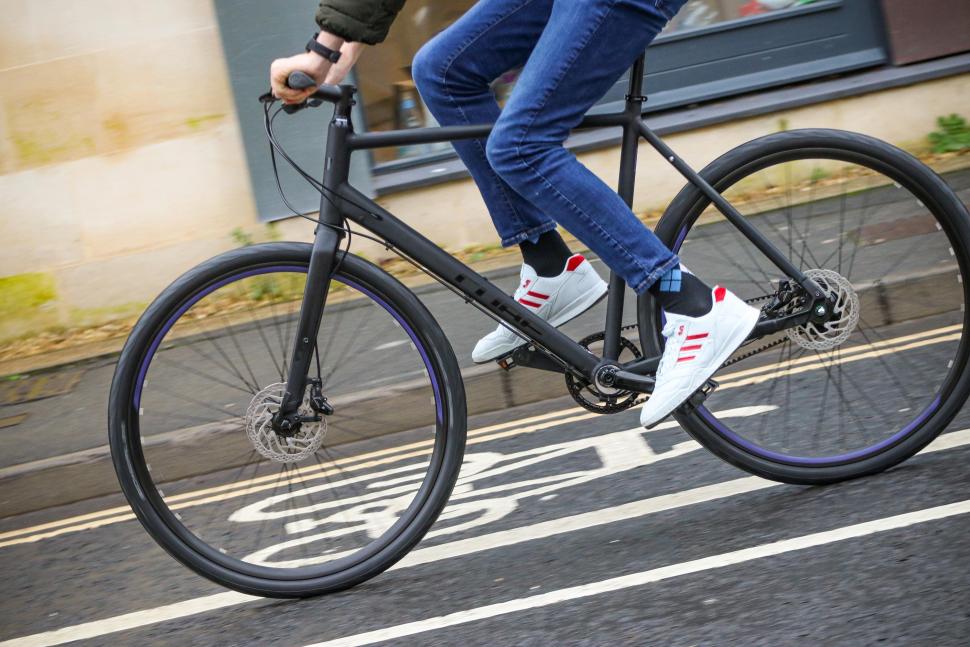
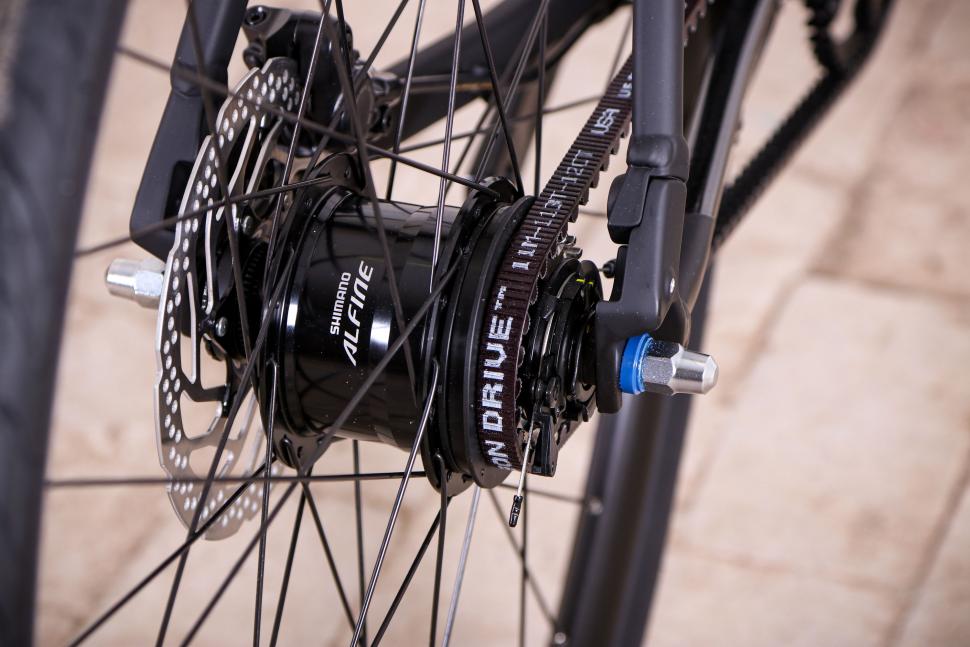

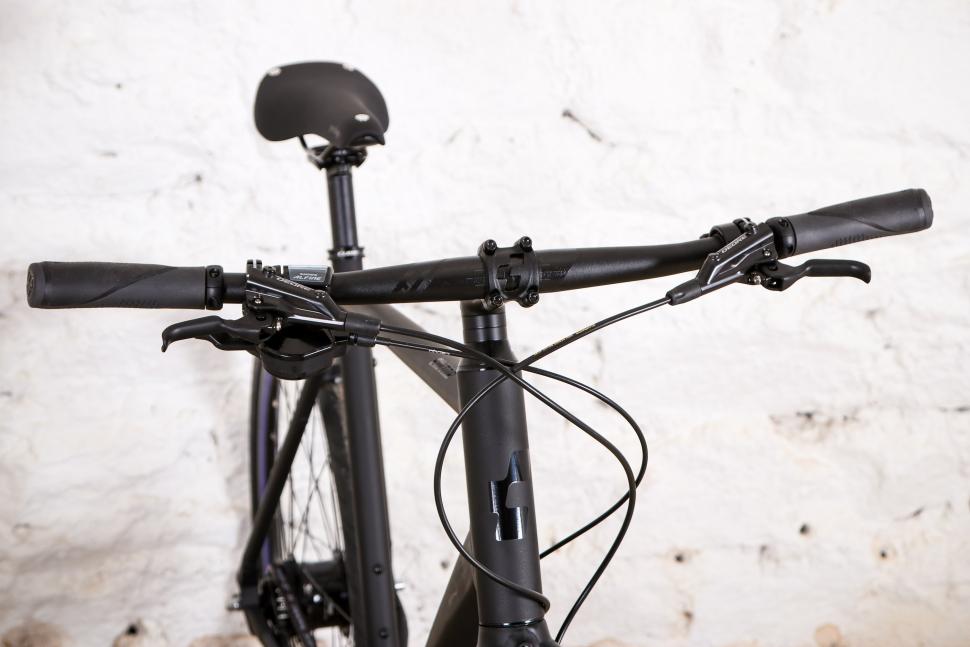
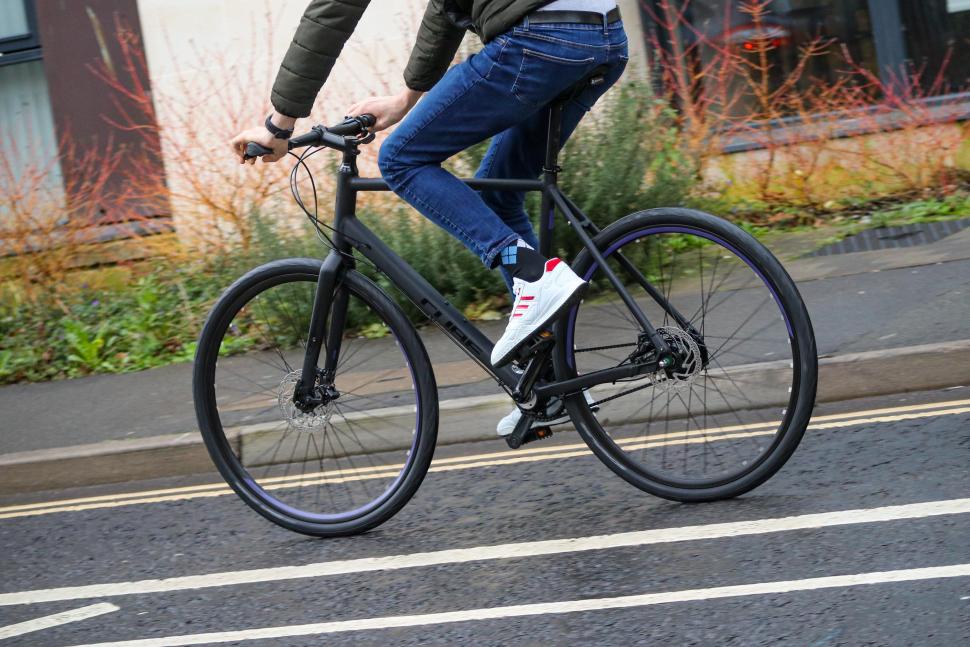
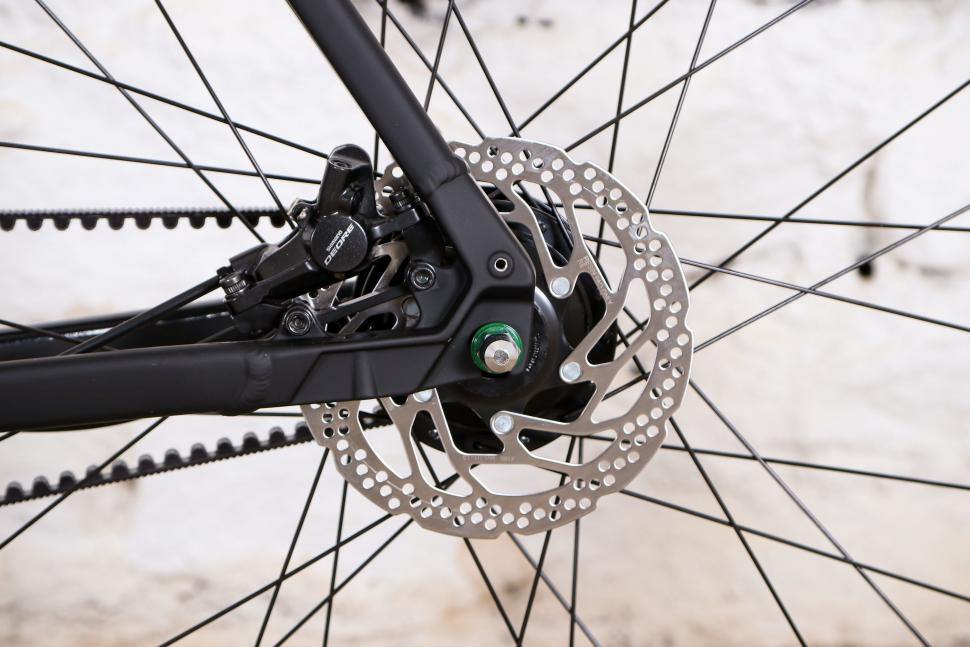
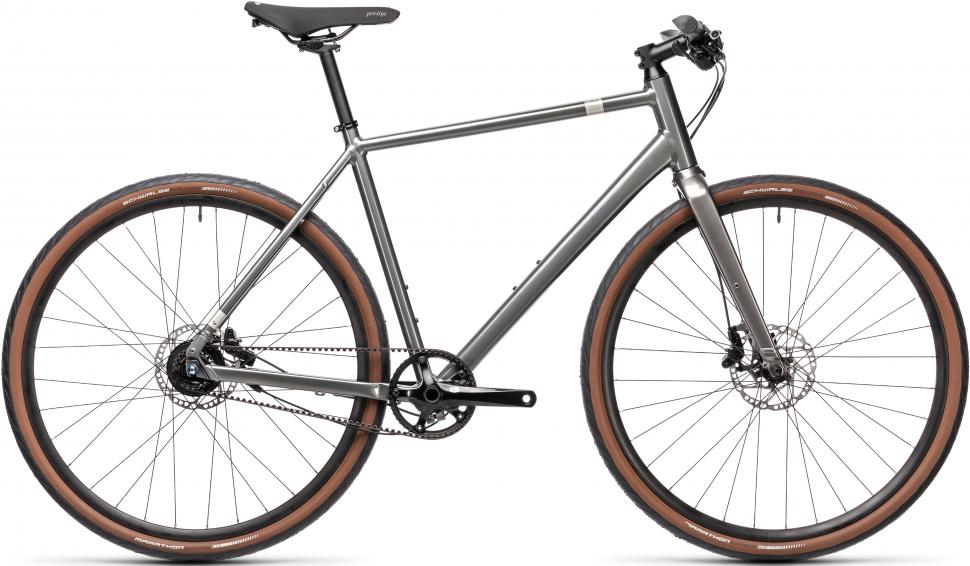
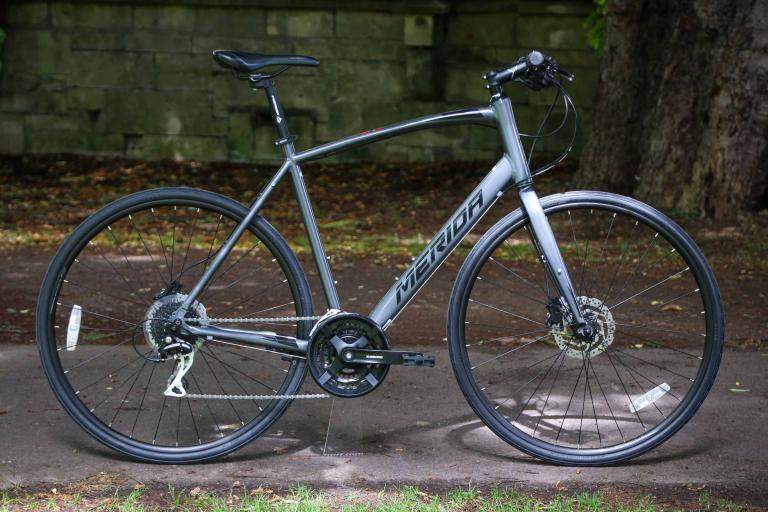
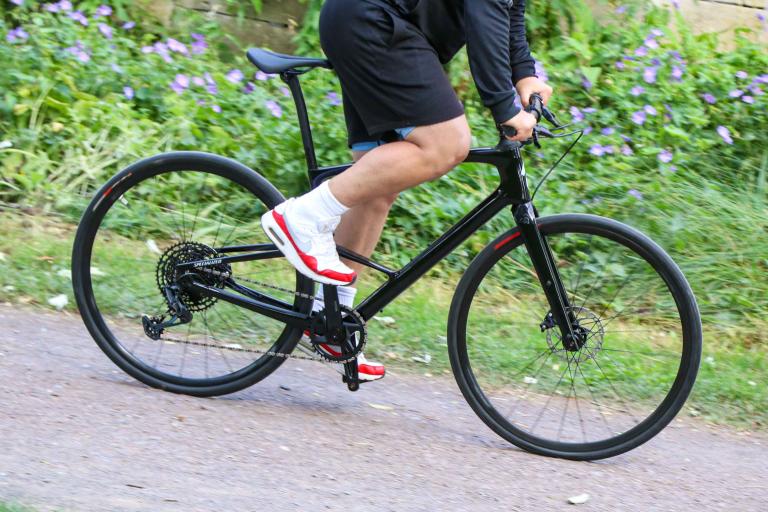
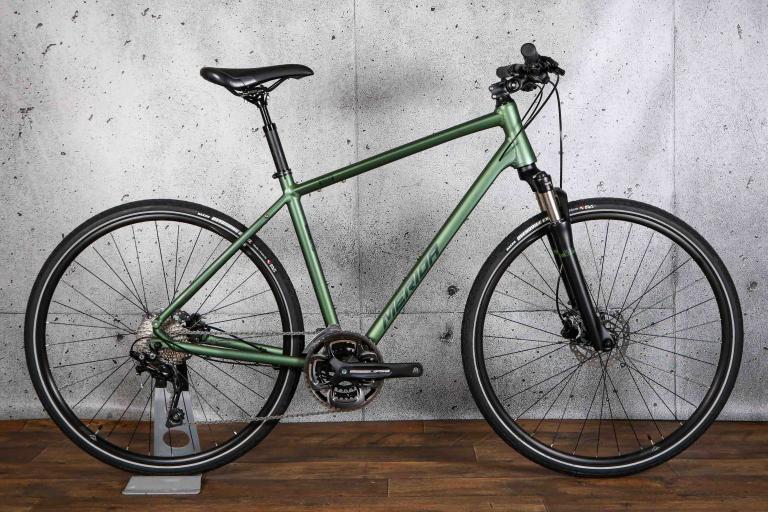
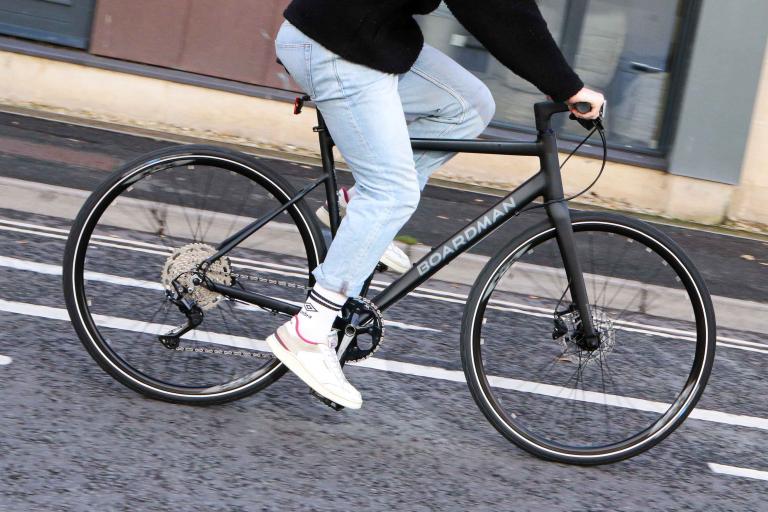
Add new comment
13 comments
I have question if someone knows. On offical Cube website for Cube Editor Black'n'Purple states it is Bike Category 1, but as I see on front bar there is sticker with bike category 2. So which is 1 or 2 for this bike?
I bought it second-hand (no sticker on bar), so I am interested in which category bike belongs.
Thanks
Another 'town bike' without dynamo lights, rack and mudguards... Cube's bike designers need to spend more time in towns.
Another "town bike" without mudguards. The designer must live somewhere with much better weather than me. I know you can retro fit but what a faff with hub gears.
That's a good point, I had not considered how the hub gear would make it more of a faff to fit a rear mudguard. I take it that you have to disconnect the gear cable from the hub somehow before removing the wheel, is that the issue? And then does that need any re-calibration to get the gearshift back in sync afterwards?
And yes, the lack of mudguards is just a deceit for the advertised price, they are non-optional.
Great to see a review of a belt drive commuter - they really are the best option for a low maintenance, daily use bike.
I tried to buy one of these 2 years ago but nobody had stock.
After a brief dalliance with a Cube Hyde Race I settled on a BMC Alpenchallenge.
Great to see a list of other options.
Can someone explain gears from 30 inch to 122 inch please? I only understand ratios!
0.53 to 2.15 in the hub, 2.3 to 9.5 with the 46/22 drive setup.
Raw gear ratio x wheel diameter = gear inches. Traditionally the "wheel diameter" was taken to be 27" for road gear inch calculations.
Google "gear inches to ratios" or similar.
Edit: Actually nice article on here about such things, with some good links
https://road.cc/content/feature/beginners-guide-understanding-bicycle-ge...
Thanks all - that explains it. My gears are quite a lot smaller than 122 inch...
I put the numbers into the marvellous https://www.sheldonbrown.com/gear-calc.html and found out that my 50/34, 11/32 road bike comes in at 28.7" to 122.7". I can see the value of this now I understand it as provides a means of comparison independent of wheel size etc.
It's the equivalent diameter of the driven wheel if you were on a Penny-Farthing.
> Fork: Aluminium Rigid Fork
perhaps not?
I have a Focus Planet with a very similar spec to this bike.
Belt drive, hub gears and hydraulic discs are definitely the way to go on a commuter.
It requires almost no maintenance despite being ridden through the glorious British weather all year round.
Great review, well judged comments. Hope Cube are listening!